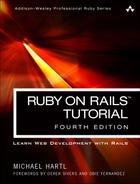Foreword to the Third Edition
Rails is now ten years old, and adoption shows no sign of slowing down. Along with the perpetual growth, we’ve seen a paradoxical tragedy unfolding. According to many people, Rails is now one of the hardest tech stacks for beginners to adopt. The complexity of choices to make when starting out is very high, and there are ten years of blog posts and books out there, most of which are obsolete and broken to some degree or another. The supreme irony is that getting started with Rails today involves a lot of configuration, perhaps not of Rails itself, but of the myriad libraries that are recommended for use with it. In case you’ve forgotten, or weren’t paying attention in 2005 when Rails debuted, the main goal was to achieve convention over configuration.
To some extent, we’ve replicated the Java web beast that we once fought hard to slay. Argh.
Don’t get too depressed, though, because that would be missing the point. The good news is that once you’re past the daunting learning curve, Rails remains one of the most powerful and efficient stacks available for building API back-ends and content-driven websites.
Now maybe you’re considering using this book to kick off your journey up the Rails learning curve. Trust me, it’s the right choice. I’ve known Michael Hartl for almost ten years now, and he is a highly intelligent man. Just look for his credentials elsewhere in the book and you’ll see what I mean. But never mind the prestigious degrees; the approach he has adopted for this latest edition of our best-selling Ruby on Rails™ Tutorial proves just how smart he is. Instead of doubling down on the opinionated approach (like another series author I know, ahem), he’s gone in the opposite direction! By getting less opinionated, he has lowered the barrier for Rails newcomers in significant ways.
First of all, he dispenses with any sort of local installation or configuration. He also eschews complex configuration options (like Spork and RubyTest), which are likely to trip up novices. All code examples run in a standardized cloud-based environment accessible via a simple web browser.
Second, he throws out tons of content from the previous edition and embraces the Rails “default stack”, including its built-in MiniTest testing framework. The resulting elimination of many external dependencies (RSpec, Cucumber, Capybara, Factory Girl) makes the Rails learning curve quite a bit easier to climb, at the expense of having to rewrite big swaths of the book.
Over the years, in no small part due to his work on this book franchise, Michael has become a master of writing training materials grounded in practical, useful knowledge. And as in the past, this edition includes basics of vital tools such as Git and GitHub. Testing is front and center, which most would agree is the proper emphasis for beginners. Michael’s well-polished examples always utilize small, bite-sized pieces of code—simple enough to understand and novel enough to be challenging. By the time you finish the book and are playing around with your very own little Twitter clone, you’re sure to possess a deeper, more flexible knowledge of Rails. Most importantly, you’ll have a foundation flexible enough to get you coding up nearly any type of web application.
Godspeed!
—Obie Fernandez,
Series Editor
